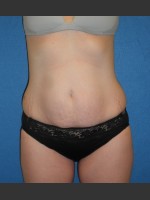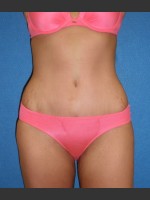How To Decide Between Invasive vs. Non-Invasive Body Contouring

By Chelsea Campbell
Even when eating right and exercising, it is common to be discouraged by areas of the body that don’t seem to be responding to your weight loss efforts. Often times, there are lingering areas of stubborn fat or unsightly loose skin that lacks tone. Whatever your goals are, today there are a myriad of options ranging from completely non-invasive to traditional surgery that can help you achieve the body you are aiming for. Do you want discreet, or dramatic results? Are you able to take days or weeks off work or other activities for healing? How do you feel about going under anesthesia? Below, we help break down the most popular body sculpting procedures so that you can be more informed about what is right for you.
Non-Invasive Procedures
If you are looking to reduce areas of stubborn fat but are hesitant to resort to surgery, then non-invasive body sculpting may be the right option for you. CoolSculpting uses a device that freezes fat cells by passing over areas like the abdomen and thighs with a wand, suctioning up the skin while cooling the deep layers of tissue, freezing the cells below. Once the fat is frozen, the cells crystalize and subsequently die, and are then naturally eliminated by your body as other cells consume the dead fat cells. The treatment is only mildly uncomfortable for patients due to the cold temperature, but there is absolutely no analgesia required and zero downtime. Patients are able to return to work immediately after the procedure and resume normal activity, though you will likely have to return several times for follow up procedures in order to achieve desired results.
Another non-invasive treatment is SculpSure body contouring, a laser that specifically targets pockets of stubborn fat in areas such as the abdomen, flanks and under the chin. SculpSure treatments use a specific wavelength laser to target fat cells and heat them up inducing destruction of the damaged fat cells. This results in a gradual loss of fat cells in treated area. Initially during treatment, you will feel a cooling sensation. This helps keep the skin comfortable. The cooling will be on the entire treatment, while the laser cycles on and off, raising the temperature of fat cells. This treatment takes just 25 minutes to perform, requires no anesthetic and no downtime, making it ideal for people who are busy and who want discreet results. Many patients even have these procedures performed during their lunch break and are very pleased with the natural looking results!
Minimally Invasive Procedures Radiofrequency-assisted liposuction (RFAL), like BodyTite is a more minimally invasive procedure that harnesses the power of the thermal energy field in order to remove fat and facilitate skin tightening. A small electric instrument inserted under the skin creates a high thermal energy field, allowing for both coagulation of fat and skin contractions, resulting in less body fat, a reduction in the appearance of cellulite, and tighten skin. Radiofrequency-assisted liposuction is performed under local anesthesia or light sedation. It requires no hospital stay, and recovery time is only about one to two days, as opposed to the usual two to six week recovery of traditional liposuction. Because it requires only very small incisions, many RFAL patients return to work only a few days later.
Smartlipo® is another option that uses laser technology to liquify fat under the skin so that it can be easily suctioned and removed from the body. Smartlipo® requires only small incisions and is performed under local anesthesia. Another benefit of Smartlipo®, is it actually tightens the skin through coagulation, so you don’t have to worry about dimpling and sagging skin after treatment. Patients typically report soreness for several days afterward and sometimes will be required to wear compressions garments for a few weeks. However, most are cleared to perform regular activities a few days after the procedure is performed.
Traditional Liposuction


